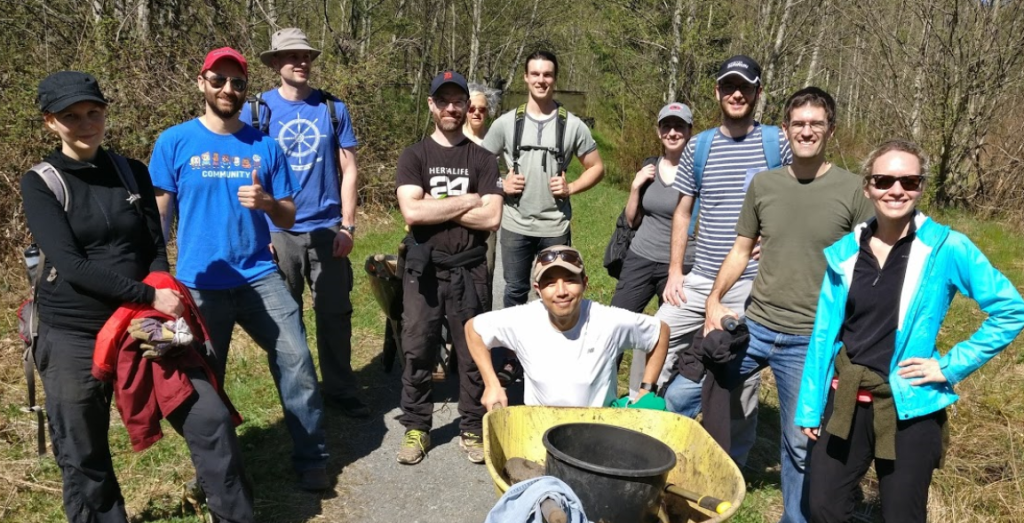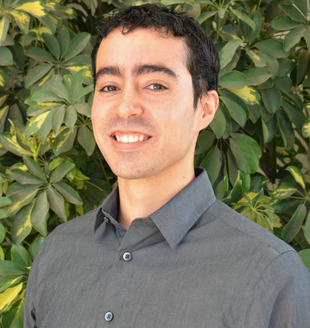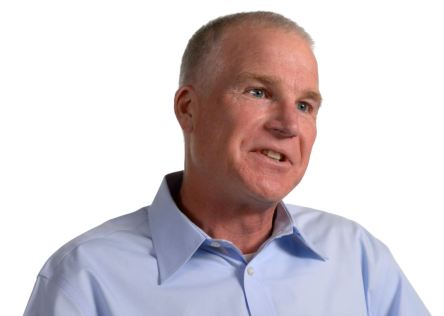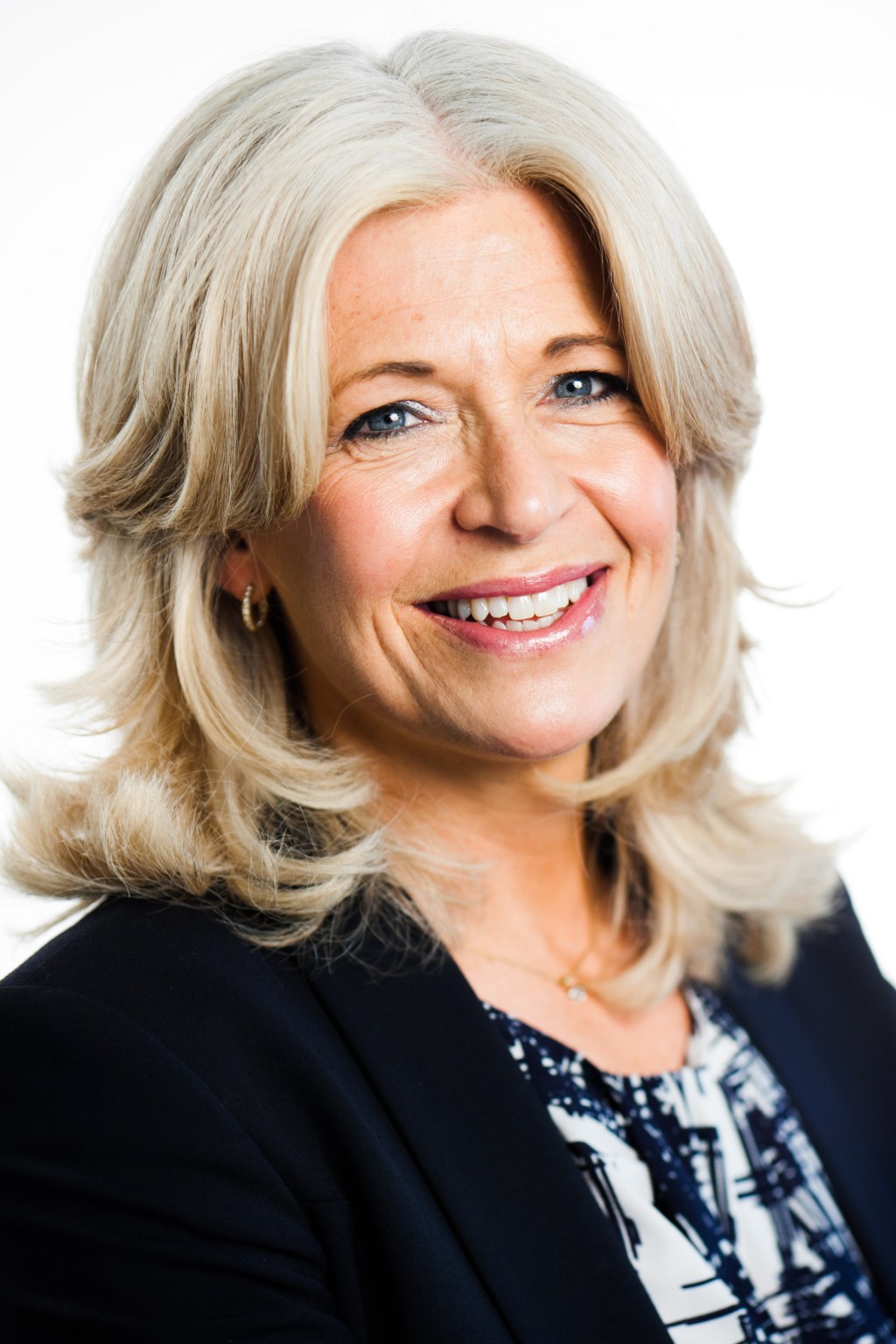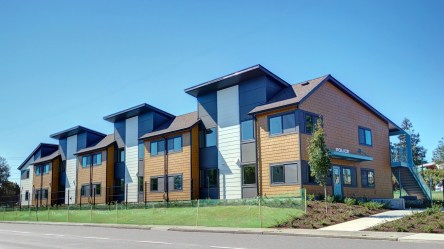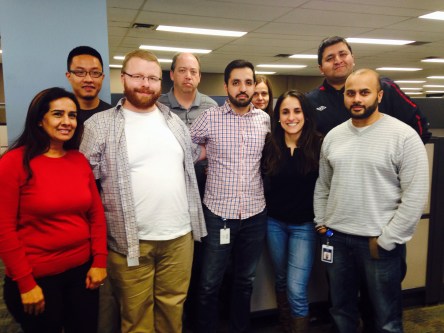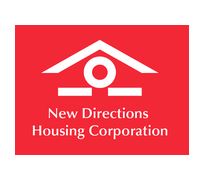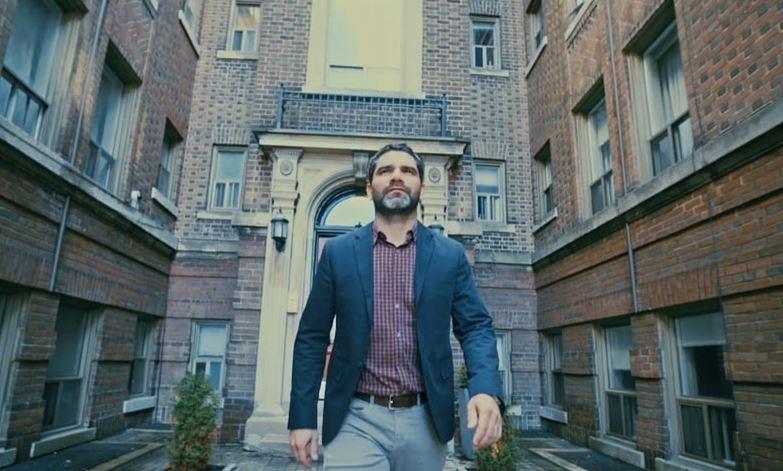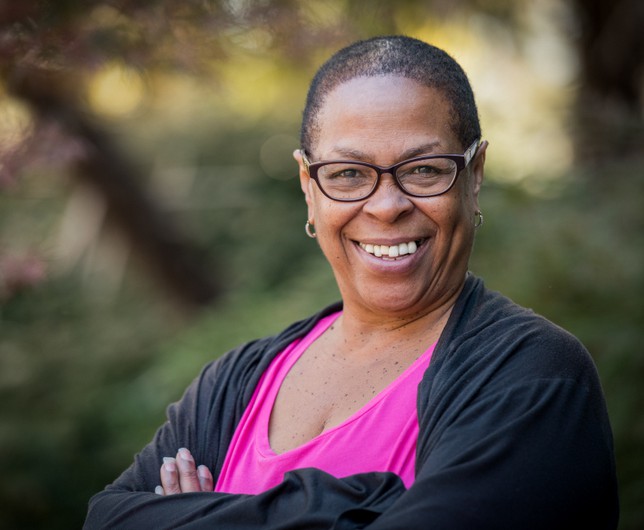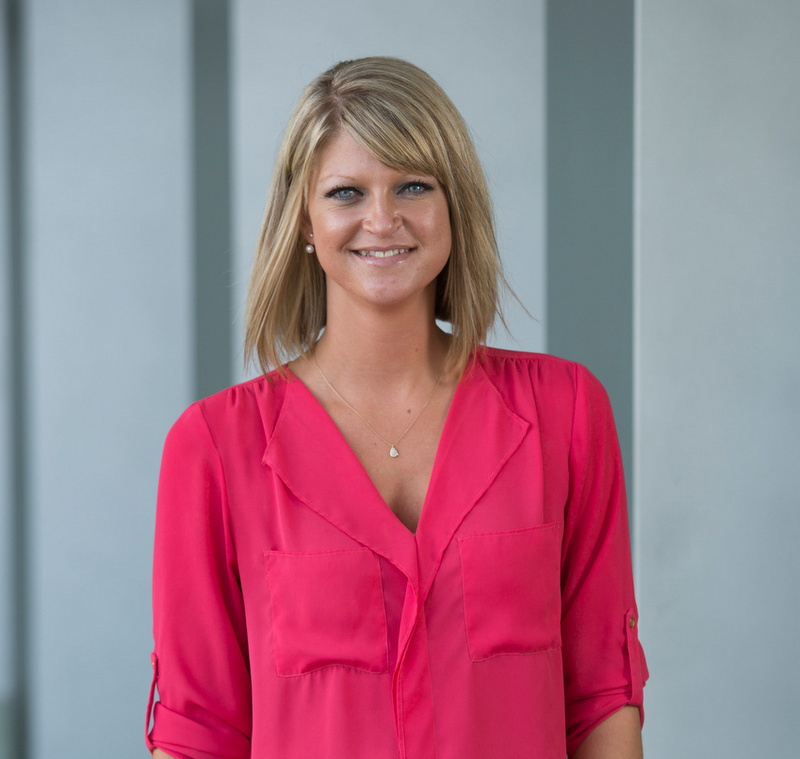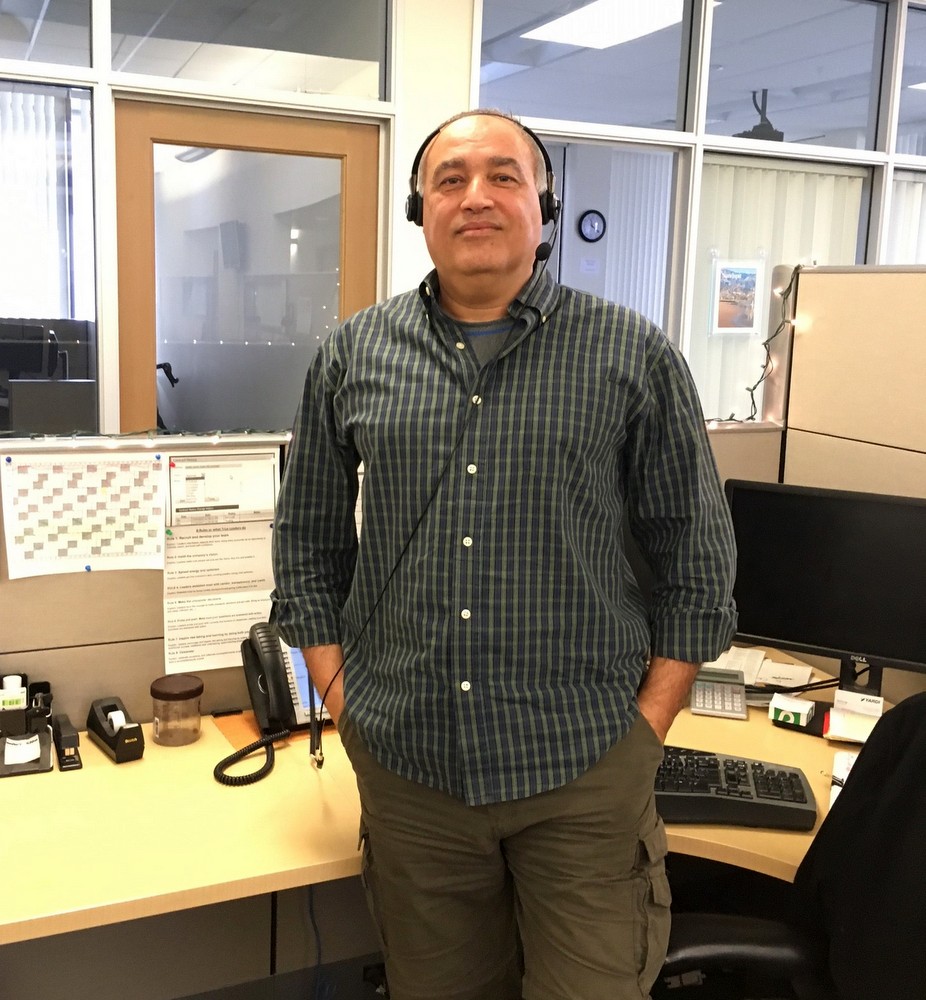Two Yardi colleagues on opposite sides of the country are participating in the YSC Tour de Pink cycling stage race this year to raise funds for breast cancer patients. The ride benefits Young Survival Coalition, a nonprofit dedicated to providing information, resources and support to young women affected by breast cancer. Both are part of the Global Solutions Investment Management Team, but are at very different stages in their Yardi journey. Susan Freehauf is an 18-year employee of Yardi and a Senior Director in Global Solutions. Marlyn (pronounced Marlene) Amoguis is a new Consultant in the same department who has been with Yardi just one month. Freehauf works remotely from Florida, while Amoguis is based out of the Yardi San Diego office. Both women have similar stories – they joined Yardi after previously working for a real estate company that was a Yardi client, and each has a strong background in fund/financial accounting, database management and software implementation. But one thing they didn’t have in common, until recently, was cycling. Marlyn is an experienced rider, who has been mountain and road cycling for years and participated in last year’s Tour de Pink in California with a group from her San Diego cycling club. But Susan had never bicycled for fitness until Marlyn told her about the Tour de Pink and what a rewarding and fun experience the ride had been when she took part in 2016. Each rider must raise $2500 for the non-profit in order to participate in the 200 mile ride over three days. Shorter distance options are also offered. “Last year I did not know what to expect, and I had a very positive experience. Many of my fellow riders were from the health care industry and were very genuine, caring people....
Working for the Earth
Yardi Vancouver
One of our newest offices, located in Vancouver, British Columbia, has an innovative Earth Day tradition. Formerly Pulse Energy, Yardi Vancouver is a founding member of EarthWork Day (EWD), an annual collaboration with three other environmentally-minded companies. “Held on or close to Earth Day every year, staff from each company dedicate their time on EWD to local environmental projects,” explained Colin Chan, a CSD manager for the Yardi Smart Energy Suite. This year, two projects were taken on the day before Earth Day, Friday, April 21. Each team member receives a small budget of $22 to put toward supplies, and the projects selected are always environmentally conscious. Teams are mixed between the participating companies, so everyone gets to meet and work with someone new. At the end of the day, it’s time for a get together to share snacks, notes and beer. This year’s projects were: Maplewood Flats Habitat Restoration “This is the third year we have participated in this project, restoring habitat for the Anise Swallowtail Butterfly that has gone extinct from the North Vancouver area from urban development,” Chan explained. “We’ve been removing invasive plant species and planting native species in the hopes that we can eventually import caterpillars from other areas where the butterfly still exists and re-introducing it to the area.” The effort at the habitat aids the Wild Bird Trust of British Columbia. “It’s been personally rewarding to see the progress we’ve made from year-to-year. The Wild Bird Trust is a small non-profit with limited funding and resources, so it’s a great feeling to help contribute to the success of their habitat restoration project,” said Jennifer Sinclair, office administrator for Yardi Vancouver. “It has also been a fun annual team-building event for our office!” Garden Planter Construction A Vancouver public low income housing complex needed garden planters to help residents improve food security by growing their own produce. “In one day, the team built 15 planter beds, including some that were accessible to residents who use wheelchairs,” Chan said. Tyler Fawcett, creative director in the programming department, participated in the effort. “We joined forces with BC Housing to construct planter boxes behind two of their residential buildings. 15 new boxes were constructed and filled with soil, to be used as flower and vegetable gardens by the building residents. “Before the boxes were even half-done, many enthusiastic residents had come out to claim their plots in the new garden,” Fawcett shared. Photos from the day appear in the gallery...
Helping the Hungry
Yardi Cleveland
According to the Greater Cleveland Food Bank, one in five Cleveland kids goes hungry on a regular basis. Yardi’s Cleveland office recently teamed up in a friendly competition to do something to help. “Since 2013, we have held a non-perishable food drive and competition each year to contribute to the Food Bank’s Harvest for Hunger campaign,” said Karen Parker, a technical account manager on the Cleveland CSD team. “Each year we have topped our previous effort and raised more than the previous. We started in 2013 with 48 employees and collected 375 pounds of donations. This year we have 70 employees and managed to collect 1,735 pounds.” The theme of the effort is the “Fight Hunger Games,” a concept Parker came up with when the popular book trilogy Hunger Games, now also two films, was wildly popular a few years back. “The office is divided into Districts. Each District is represented by a Tribute. And the Fight Hunger Games begin,” Parker explained. “Each District brings in supplies and food donations. These are counted and become part of the final score. The Tributes participate in a round of games. The scores are totaled and winners announced.” It’s a fun and friendly competition but can get competitive, said Parker, leading to some spirited games of “Rock, Paper, Scissors.” Other games included Guess Who and Corn Hole. There’s also a potluck food component that everyone in the office can enjoy. “A soup kitchen is created with staff members bringing in various types of soups, dips, salads and desserts. A donation of two cans of food will get you all the soup you can eat. And believe me, it was really yummy,” Parker said. The Greater Cleveland Food Bank explains that the donations are badly needed, especially at...
Jose Martinez
A UCSB to Yardi Story
For college students leaving UC Santa Barbara, the pull to stay in Santa Barbara can be strong. With beautiful beaches and mountains, a friendly city with a small town feel, and the chance to participate in all sorts of fun recreational sports, many consider this part of California to be paradise. For Yardi Development Manager Jose Martinez, that was the case when he was about to graduate from UCSB ten years ago. He had the added desire to stay close to his hometown of Oxnard, just 30 minutes south of Santa Barbara. A computer engineering major at UCSB, Martinez didn’t want to give up the chance to build a career with a strong company. He had worked hard as an undergrad to build up his computer programming knowledge, and wanted to put those skills to good use in his first job out of college. At a UCSB Career Fair, he discovered Yardi Systems, a Santa Barbara-based software-as-a-service provider for the real estate industry that was growing fast. Martinez submitted an application, was interviewed, and accepted a position with Yardi’s military housing division, then a new product for the company. “The team was implementing U.S. Army installations onto the software, and mapping data from a non-Yardi database onto Yardi’s platform. I had taken a SQL course in my last year of college because I suspected that was what companies might be looking for. I jumped in and was helping with SQL scripting solutions for military housing clients,” Martinez recalled. Fast forward a decade, and Martinez now heads the programming team for the Specialty Solutions suite, which includes projects for a variety of non-traditional housing markets. He oversees 40 employees, including software engineers, quality assurance specialists and technical writers. A portion of the team is based...
Senior Living Forum
Yardi Events
On March 29-30, Yardi hosted the second Yardi Senior Living Forum, focused specifically on the needs of our senior living clients, in Santa Barbara, Calif. The two-day featured speakers, classes, roundtable discussions, computer lab time and more. In advance of that event, Ray Elliot, vice president of senior living, joined us to share insight on the Yardi Senior Living Suite. An end-to-end solution that tracks senior living residents throughout their housing journey, the suite includes Yardi EHR for health care records, numerous offerings from Yardi’s ancillary product line, and continues to expand. Senior living is a rapidly growing segment of the multifamily housing market, and Yardi is developing new and improved technology offerings that cater specifically to this client base. Read on for insight on the Yardi Senior Living Suite. What is your mission on the senior living team? Elliot: Our mission is to help senior living providers provide better care to their residents through software and technology. We aim to streamline both the property management and care services on a platform that is efficient, mobile and adaptable. What does the Yardi Senior Living Suite look like? Elliot: Our greatest strength s our single solution stack. I do not believe any other vendor can take you from the initial contact that starts the resident relationship, all the way through the resident lifecycle. RENTCafe Senior Living can be used to market the communities. Prospect and mass marketing is done in CRM. From there, our clients manage their communities, health care records, medical care and other resident services from a single database. RentCafe Senior Living augments the resident relationship by allowing the resident and family to make payments online and view care related information. Added together, this level of functionality is unique in the market space. Many other technology providers address just one segment of...
NewRiver REIT
UK client interview
The British retail investment market joins the rest of the United Kingdom’s business community in facing a host of unknowns in 2017. Chief among them is the timing and impact of the UK’s exit from the European Union following the outcome of the referendum in June 2016. Yardi caught up with one its partners, NewRiver REIT, a specialist retail and leisure investor, asset manager and developer whose convenience-led positioning means it is uniquely placed to navigate these uncertain times. NewRiver’s £1.3 billion portfolio includes 33 community shopping centres, 22 retail parks, 16 high street assets and 350 pubs. The portfolio provides consumers up and down the UK with its daily essentials – those items essential to daily life, the things consumers require, opposed to what they simply desire. Fundamental to the success of the business over the past seven and half years has been how NewRiver has engaged with and satisfied all the stakeholders within its chain, from store customers, retailers, peers, advisors and local authorities all the way to its institutional investors and shareholders. “At the heart of the retail sector is the customer and our business begins with building and retaining consumer loyalty,” says Emma Mackenzie, a Director at NewRiver who manages assets in Scotland, Northern Ireland and the north-east of England. “At the local level, we make sure our shopping centres satisfy the needs of the towns they serve. Its about providing a variety of products and services at a price the customer can afford. Furthermore, we work hard to ensure the environment is fit for purpose – and that includes such basic factors as the centre being clean and accessible as well as bright and attractive and providing somewhere to sit down or get a cup of tea.” Brexit has triggered...
Pivotal Point
New Beginnings for Families, Land
Each year, more than 4,000 households rely on the services of Everett Housing Authority (EHA) of Snohomish County, Wa. The new Pivotal Point community reflects the importance of new beginnings for residents as well as for the space that they occupy. Old Site, New Purpose The site of Pivotal Point is the former Oswald US Army Reserve Center. It closed as part of the 2005 Base Realignment and Closure (BRAC) operation. Rather than sitting vacant, construction on Pivotal Point gave the space a new purpose. Fulfilling that new purpose, though, took longer than many anticipated. Financing and permits required the approval of numerous governmental organizations and stakeholders. Ashley Lommers-Johnson, Executive Director at Everett Housing Authority, recalls the challenges. “When you deal with multiple federal agencies, local agencies, the military–it’s just a lot of hands involved in getting all of the funding lined up. That was a significant achievement, getting the funding,” he smiles. In 2014, the property finally reached completion. Pivotal Point now serves as long-term housing for participants in the Domestic Violence Services (DVS) of Snohomish County program. All signs of its military past have been replaced with fresh, modern, and welcoming residential features, in a sense “a conversion from swords into ploughshares,” according to Mr. Lommers-Johnson. A private entryway and a cozy front porch adorn each of the 20 units at Pivotal Point. Shared stairs leading to the second-floor units open to reveal a courtyard speckled with greenery. In the center of the courtyard stands a protected playground. Parents can watch their children play from the covered benches nearby. Back on the main level, residents share a laundry facility. The adjacent meeting rooms are used for private and community gatherings. The project and its design have received national praise. Pivotal Point won the National...
Teamwork Pays Off
Canada Payment Processing
It’s true that hard work pays off, and as the Yardi Canada team based in Toronto has discovered, that hard work can also be rewarding in unexpected ways. In summer 2016 Yardi introduced a collaboration with payment processing solutions provider BluePay to enable electronic rent payments in Canada that make the lives of property managers easier (and funds flow faster), and soon MasterCard credit card payments will be another convenient option. Peter Altobelli, vice president of sales and general manager for Yardi Canada, commented, “This collaboration joins Yardi’s property management solutions with BluePay’s experience in processing billions of dollars of transactions annually for thousands of organizations. Working together represents a giant step toward making electronic payments the secure, efficient rent payment method of choice in Canada.” And while serving their customers better than ever, Yardi Canada has enjoyed collaborating with their U.S.-based Yardi Payment Processing team members. Working together to create not only a superior product offering but also a stronger team has been a truly positive experience. That’s the experience that Rosa Mota, a technical account manager on the Payment Processing implementation team, has happily shared. Rosa elaborated, “I’ve been assigned to help the cash management team in Canada get up to speed on the exciting developments with Payment Processing. Our electronic payments collaboration with BluePay eliminates the lengthy process our clients used to endure to receive their monthly rent payments. Now they get their funds within hours. I spent two weeks in the Toronto office working to build implementation documentation, and showing product demos.” Rosa also completed a client implementation while in Toronto, which afforded a valuable hands-on experience for the account manager. Culture of Camaraderie Yardi Canada includes three locations in Toronto, Saskatoon and Vancouver, each with different areas of product...
Less Juggling
New Directions Housing
The story of Janice Hill reflects the dilemma of many managers in the affordable housing sector: she wades through an endless stream of work while juggling several responsibilities at once. All this is done while dealing with, what seems to be, fewer hours in every day. “My title this week is business analyst,” chuckles Hill. She follows with a telling sigh. Also like many others in the industry, she loves her job. Hill has worked with New Directions for 18 years. She takes pride in helping people secure housing, giving them a stable foundation upon which they can build their dreams. But the demand for affordable housing continues to grow. Staffing and other resources can’t keep up. That’s why she and the small, dedicated staff at New Directions Housing Corporation are exploring how to help more people using fewer resources. The organization turned to Yardi for help. In 2000, New Directions implemented Yardi Advantage before upgrading to Yardi Voyager® property management platform in 2002. The web-based platform facilitates operations management, leasing execution, and easy analytics. The team recently updated to Voyager 7S with enhanced functionalities. Voyager 7S runs on any device using any browser. It also hosts user-friendly mobile apps and add-on products that allow New Directions to improve efficiencies and deliver competitive services to residents. Hill explains, “We chose Yardi Voyager because it was Windows-based and it had everything we needed it to do: management, maintenance, affordable, payroll. Everything was in one place. We got rid of a database and [two competitors] for the financials. Voyager got rid of all of these different programs that we were using to run New Directions. Voyager simplified it.” Voyager has helped New Directions do more with less. Streamlined and automated workflows promote efficiency, accuracy, and transparency...
Yardi Internships
Career development & fun
Yardi is a place where learning and creativity are encouraged. Internships are a vital part of our company culture, offering a fun and informative way to introduce graduating students to the technology industry. The Yardi internship program offers hands-on work experience, professional development and networking opportunities. Our interns can be found working on everything from programming and eLearning to client support and marketing. We asked a few of our current interns and recently hired team members about their experiences. Below, they provide insight into what types of projects, skills training and career opportunities an internship can offer graduating students. Applying According to Jason Rollman, Manager in Client Services at Yardi, “Interns apply and are interviewed in the same manner as someone who is looking for full-time employment.” College students majoring in Math, Finance, Economics, Statistics, Computer Science or Accounting are preferred. After being hired, flexible weekly scheduling allows students to prioritize academics while typically working a minimum of 15 hours per week. Silvana Keiling, a former intern and current software development engineer, applied for the Yardi Romania internship program after learning about it at her university. “If you wanted to apply for an internship, it was pretty hard not to choose Yardi Romania,” she reflected. As a global company, we support a technical internship program at our offices in Cluj-Napoca, Romania and internships across our offices in Canada. In the United States, Yardi works closely within the University of California and California State University systems and recently expanded internships to the East Coast. Yardi culture Our company values collaboration, customer service, innovation and fun. We are looking for individuals who are driven, have a desire to learn and enjoy a laid-back team environment. When asked about his experience as an intern, Cody Underwood, a fourth year Business...
Timbercreek Communities
Canada Client Video
When David Melo, president of Timbercreek Communities, joined the company, his first call was to Yardi. Melo knew that the company needed a stronger, savvier technology provider to manage its complex accounting needs, and also enable the company to add vital solutions for ancillary services. Yardi Voyager delivered the tools that Timbercreek needed to succeed. Watch the video: Beyond superior accounting and reporting capabilities, moving from manual to automated processes within Voyager has provided Timbercreek with cost control and greater end-to-end operational efficiency. As an early adopter of Yardi PAYscan in Canada, Timbercreek has quickly realized the benefits of automating accounts payable. “Moving from a manual process to one that is automated with a workflow not only increases accuracy and processing speed, but also improves cost control,” said Melo. He added that the PAYscan mobile app is a great tool for staff who travel frequently, as it allows them to approve invoices from airports or anywhere else they happen to be. Timbercreek is also rolling out RentCafe resident portal and Yardi Maintenance, including the mobile app, across its portfolio. They expect significant time savings and improved responsiveness thanks to seamless Voyager integration. Melo commented, “We were manually receiving emails from our website for maintenance requests, which required someone attending to the email inbox and forwarding the messages to the right people. Now residents can simply log in to the resident portal, enter their service request and start the workflow.” Consolidating operations portfolio-wide on the Voyager platform has also improved communication within the company. As part of its inherently collaborative culture, Timbercreek has found great success with appointing “Yardi Champions” across its business. Melo commented, “We’ve empowered a small group of Timbercreek employees to be Yardi Champions. These individuals lead the charge and take ownership of each solution piece of our Voyager platform. This is an exciting new approach, and we’re already seeing great results from our 400 onsite employees. Yardi has absolutely helped empower our...
Upgrade Like a Rock Star
Fairfield Residential Embraces 7S
Our “Upgrade Like a Rock Star” series provides insider tips for a seamless transition to Yardi Voyager® 7S. In this segment, Senior Business Analyst Melanie Moyers shares how Fairfield Residential made the conversion across 50,000 units of multifamily and affordable properties. First, Fairfield Residential shifted from self-hosted to hosted on Voyager 6. Yardi Subject Matter Experts assisted Moyers and her team through an extensive series of test scripts. The joint effort made the transition effortless. Moyers says, “We really didn’t have anything come up during testing whatsoever just going to hosted so that was very quick!” After the two-month transition from self-hosted to hosted, the company began the conversion to Voyager 7S property management platform. Testing and Training Moyers explains the process: “For 7S, we did a more extensive testing. We made sure we had two users from every single permission group. We have a lot of user groups and permissions do change, like little hidden permissions in 7S, so it was very helpful to do that.” She continues, “It was extensive on the testing part but we tried to limit it as far as what people actually tested so they were only doing things that they really know about. In IT, we took the bulk of running through a huge script to make sure everything was covered.” Originally, the three-person IT team planned for three months of testing. They decided to request the support of three additional application support technicians. Then they extended the testing phase to four months in order to accommodate changing permissions. “We went ahead and added an extra month just so we would do a second round of testing with all those same people. We got a clean script from every single one of them,” says Moyers. Fairfield Residential’s education department for property management facilitated training for onsite personnel. The group assessed software changes that would affect most of the group, then educated the staff via webinar. Perhaps more importantly, the training department garnered excitement for the new software. “The training was more about building excitement for them, to not be scared that something new was coming out,” says Moyers. Moyers led training for the corporate staff. She broke the general sessions into hour-long increments then hosted additional 30-minute sessions for accountants and those with changing roles. After four months of testing, the team was ready to go live. The IT department braced itself for a flood of help desk request. The group was pleasantly surprised. “We anticipated that there was going to be a big uptick of help desk requests. There wasn’t actually that much but we had the whole team geared up for it, so we were pulling all those tickets right away. But later in analyzing the data we actually only had about three weeks of increase and then it completely went back to normal,” recalls Moyers. Challenges One of the only problems that Moyers encountered came with users’ perception of speed. Voyager 7S added a load bar, a visual that alarmed some employees. “I think because people saw the load bar, people were like, ‘Oh, it’s slower. It’s slower!’” laughs Moyers. “We had our old Voyager 6 environment available still. We would actually get on a GoToMeeting and show them it was faster in the new environment. That helped a lot because it was just a mental thing to them and there were a few hanging onto that.” Favorite New Features Among the upgraded features, five have received notable praise from the Fairfield Residential staff. The new menu search tops the list of favorites. It allows users to enter a query directly on the main dashboard. AJAX auto-fill search makes exploring 7S resources faster and easier. Users enter a word, phrase, or partial word in the Search box. Voyager 7S quickly retrieves matching menu items. There is no need for exact client IDs or even complete phrases. Improved lease proposal...
Kaiserman Company
Goes Green with Yardi
Arriving at the Rittenhouse Claridge in Center City Philadelphia on a cold winter’s night in January, the first thing you might notice is a charming string of white holiday lights over the lobby door. Stepping out of the cab into sub-freezing temperatures with wind chill, ducking inside the warm and welcoming lobby felt like stepping into the apartment of a dear friend. We were visiting Philadelphia to see first-hand how Yardi client the Kaiserman Company uses Yardi’s Procure to Pay platform to optimize its procurement process, streamlining ordering and delivery and making invoice approvals easier than ever before. Procure to Pay has helped Kaiserman save $60,000 annually, reduce paper use by 50 percent, and redirect staff time to other important tasks. The company uses the Yardi Voyager platform for its multifamily and commercial portfolios, and after implementing two years ago, has found the cloud-hosted solution to be invaluable. “We love it. I have been in the industry for awhile, used many different platforms, and Yardi is by far my favorite. Our leasing teams, our management teams and even our corporate office have access to Yardi. It just makes doing everyday tasks simpler,” said property manager Eric Schulz. The Rittenhouse Claridge One of just two apartment buildings located right on Philadelphia’s iconic Rittenhouse Square, the Rittenhouse Claridge was built in the 1950s by its current owner/operators, the Kaiserman Company. Over the last several years, an effort to restore the property to its midcentury roots has been underway, with charming results. On the building’s second floor, a sprawling common area with comfortable seating, fireplaces, reading nooks, game tables, a kitchen and private meeting spaces overlooks the Square. In one corner is the spacious gym, where a line of treadmills looks directly over the park. The vibe...
McCormack Baron
Continues its Yardi Journey
A leading property management company requires a software company that is able to accommodate the management of its developments. McCormack Baron turned to Yardi property management solutions to facilitate growth and improve efficiencies across its diverse portfolio. Yardi Voyager Project Manager Karen Pruiett has been with McCormack Baron for nearly 30 years. She ushered her company through its first Yardi Voyager® implementation in 2004. Since then, she has seen McCormack Baron flourish and adopt new Yardi software to meet its needs. “We chose Yardi Voyager because of its excellent accounting background and the property management capabilities in the software,” says Pruiett. “We looked at different companies and you guys have the best accounting background. Also, the number of property types that you all support is amazing. That was a necessity for us.” Yardi Voyager is a web-based platform that enables clients with larger portfolios to smoothly manage operations. It is ideal for clients like McCormack Baron that manage a spectrum of properties. With Voyager, McCormack Baron executes leases, runs analytics, and issues innovative resident, tenant, and investor services. The software automates workflows and permits controlled transparency that enables the firm to collaborate with greater accuracy and efficiency. “Voyager has definitely improved our efficiencies,” Pruiett says. Yardi PAYscan Pruiett recalls notable savings with Yardi PAYscan™, a Voyager ancillary product that automates invoice processing. “PAYscan has totally saved our lives. We were doing a lot of manual invoice processing. Now that we can scan our invoices into PAYscan, it’s absolutely wonderful to have the image attached to the invoice, especially for auditing purposes.” Before PAYscan, the accounting team had to dig through file cabinets to find invoices during audits. Now, auditors receive limited access to PAYscan and they are able to pull images of invoices...
East End Revitalized
Richmond Redevelopment & Housing
Yardi client Richmond Redevelopment and Housing Association (RRHA) recently broke ground on the expansive Churchill North/East End Revitalization project. East End Revitalization will include the demolition of the 504-unit Creighton Court public housing community. It will be replaced with a mixed-income community of nearly 1,000 energy efficient homes and apartments. Residents can choose between more than 40 townhomes, 240 market rate rentals, and public housing. The new neighborhood will include more than 500 public housing units to replace those demolished at Creighton Court. All units will be converted to the U.S. Department of Housing and Urban Development (HUD) Rental Assistance Demonstration program. The vacant Armstrong High School, the site of the project groundbreaking, is also being demolished. Upon completion, the 21-acre site will receive infrastructure redevelopment in preparation for housing. Construction may take a decade or longer to complete but the momentum and enthusiasm are growing. Mayor Jones says, “From this building will rise a phoenix of new possibility and transformation of persons who will be able to have better lives and better environments to live in.” Tammy Grubb, Housing Choice Voucher Program Supervisor with RRHA shares the Mayor’s enthusiasm. “We’re revitalizing the entire corridor,” she says. “We’re looking forward to a beautiful transformation. We’re so excited about the new housing. For Grubb, the housing is more than a shelter. She sees the new homes as stepping-stones towards a brighter future. “It’s like our mission at Richmond Redevelopment, to assist in finding housing, to encourage our clients who use housing as a stepping stone to build themselves up and take advantage of the programs that they need to step up and become more self-sufficient.” “We are also excited for the new opportunities that residents will have, personally and professionally,” says Grubb. The highly anticipated...
Hotel Oakland Village
Senior Living Runs on Yardi
Yardi client Ross Financial Services, Inc. manages the historic Hotel Oakland Village in Oakland, CA. The 315-unit affordable senior living community aims to change the way that the industry approaches healthy senior living. Leveraging the Past One of the first notable features is the use of existing architecture, a former hotel. This decision paved the way for a senior facility that is in a centralized, established location. Residents and their guests frequently take advantage of local amenities and public transportation. This allows residents to feel integrated into the community, rather than tucked away into an enclave of it. As an added bonus, the site comes with built-in character thanks to its status as a historic landmark. When Hotel Oakland opened in 1912, it was a model of grandeur. The eight-story Italian Renaissance Revival building welcomed esteemed guests from around the globe. The hotel closed during the Great Depression. It reopened as a military hospital between 1943-1963 before falling into disrepair. In 1978, the site received a new lease on life. After extensive renovations, the Owner, Bill Langelier, opened the doors to today’s Hotel Oakland Village senior living community. The spirit of rejuvenation and a new sense of purpose still seem to linger in the halls. Engaging, Effective Senior Care Hotel Oakland Village is an active and vibrant community. Of the 350 residents, 300 participate in health groups. More than 280 participate in multiple health groups. Their engagement is a sign that the organization has successfully promoted senior living as a dawn of a new epoch in life. “It’s such an active site. The residents are so involved,” says Rebecca Smithers, VP of Operations at Ross Financial Services, Inc. “There are several pictures on their Facebook page. Hundreds of people show up to the social events and group activities. It’s a really lively community.” The activities schedule is packed with engaging opportunities, from Tai Chi to Mahjong, to dance troupes and piano clubs. Of course, there are the classics like Bingo and karaoke. The events are all part of an effective plan to decrease the risk of senior isolation. Detachment and loneliness exacerbate mental and physical health issues as well as increase resident dissatisfaction. Hotel Oakland Village’s expansive footprint allows the property manager to offer several unique wellness amenities: Two Hong Fook community-based adult services centers reverse the trajectory of aging. Hong Fook helps frail elderly and adults with disabilities regain their ability to live independently. Residents work one-on-one and in small groups with therapists and nurses to regain essential skills. The increased independence helps boost residents’ confidence, esteem, and optimism. It also eases the need for family and nursing home care. Residents play an active role in the planning and execution of events in 15 health groups. This allows seniors to continually develop their social skills while focusing on their strengths as leaders and former professionals with years of experience. At the Health and Wellness Connections center, residents receive case management and healthcare services that permit them to age in place. They can also play a, empowering and proactive role in their wellbeing. Seniors collaborate with staff to create free, long-term wellness plans. The new program is the first of its kind in an American affordable senior community. Bridging Age and Language Barriers The vibrant community and staff have a large population of Asians and Asian Americans. Several languages are spoken on site, yet there are surprisingly few hindrances to communication between residents, site staff, and managing agent Ross Financial Services, Inc. “Our employees use Yardi Voyager®. There is no language barrier,” explains Smithers. “There are many Asian staff members who speak English but it’s a second language. They’re able to log on and go through their workflows in Voyager without a problem. It’s incredible.” The user-friendly and intuitive interface make Voyager a system that is easy to learn and navigate. Erica Willis, Regional Compliance Supervisor at Ross Financial...
Resident Screening
Results for Banyan Living
Amanda Smeltzer, executive director at Banyan Living, reports, “Yardi Resident Screening streamlines our screening process with easy to read reports and automatic renter approvals. The solution makes life easy for our staff, while it provides convenience for our customers.” As part of our mission to keep delivering solutions that help our Yardi clients succeed, enhancements to the popular Yardi Resident Screening module were recently released. Clients already know that approving quality residents automatically as part of their leasing workflow with Yardi Resident Screening saves time and money. Now, the system includes even more features to help clients not only easily select low risk residents who improve their bottom line, but also get more detailed analytics about individual applicants, local area renters and overall property performance. Single sign-on and better UI: now with a single sign-on from Yardi Voyager, a fully responsive UI and an enhanced Executive Dashboard, clients can work more quickly, access needed data instantly and navigate the entire system with greater ease. Fee Manager functionality: a new “fee manager” compatibility feature conveniently shows all of a fee manager’s Yardi Resident Screening analytics under one account, even if they operate from multiple owners’ Voyager databases. Criminal conviction details and improved accuracy: when an applicant is rejected based on the criminal background check, the system now provides detail about the type of conviction(s) that resulted in the rejection. And to continue to ensure and improve accuracy, applicant middle names will be required for all screenings starting in early 2017. New reports and deeper insight: to make the daily lives of property managers and owners easier than ever, more reports are available, and a new property performance feature provides a snapshot of application volume and demographic information. And to discover which local employers provide the...
CRE Tech 5.0
Guest Blog by Jim Young
Editor’s note: Jim Young is the Founder and CEO of Realcomm. At a recent Yardi Executive Briefing, he spoke about CRE 5.0. In this guest blog post, he further expands on the subject. The commercial and corporate real estate industry has many moving parts. Change is the only constant as companies around the world continually add and subtract from their organizations and portfolios. A merger today and a disposition tomorrow requires a complex network of individuals and processes to keep up with the changing real estate needs of a company. The people and processes involved in keeping a real estate portfolio moving smoothly require a significant amount of technology, automation and innovation. It is no longer possible to keep asset, lease, utilization, energy, operations and other data in spreadsheets or other disconnected information silos. In addition, there are four primary categories of technology associated with commercial and corporate real estate, 1) Real Estate Operational Information; 2) Transactions; 3) Smart, Connected, High-Performance Buildings; and 4) Next Generation Space. Over the course of the last 30 years, there have been five major phases of automation that have impacted the commercial and corporate real estate industry. Following is an overview of this CRE Tech evolution: CRE Tech 1.0 started over 25 years ago. Companies like Manhattan, Tririga, Yardi, MRI, CTI, J.D. Edwards, Argus, Angus and others, were the first to enter the real estate technology space. Their primary functionality was targeted on lease administration, asset management, accounting and property management. CoStar, which was founded in 1987, emerged as an industry giant, although the company has focused more on transactional and market data. Comps Inc., another market data company (acquired by CoStar), was also an early pioneer as were DataQuick, Damar, MetroScan and others. On the smart building...
SOHARA
Indian Arts + American Youth
Rekha Rao, Co-Founder of SOHARA, was born and raised in India. She grew up surrounded by the country’s rich heritage of visual arts, classical music and dance, all of which shaped her perspectives and values and an ongoing involvement in the cultural arts. It’s a time in her life that she remembers fondly. Rao relocated to America more than 40 years ago when her husband was finishing his Ph.D. in the United States. “We grew up in India and although now settled in the U.S., we go back often and continue to maintain strong ties to India,” says Rao. “Our children and now our grandchildren are born here and their ties to India are a little different than ours. We want all of them to be exposed to India’s rich arts and take pride in their heritage.” That yearning sparked the birth of SOHARA. The root word, “sohar,” represents traditional songs that were sung at the birth of a baby in the Mithila region of ancient India, current day Bihar. “It was perfect. SOHARA is the birthing of a small non-profit organization. We were inspired by our children, to share our passions with them in a more formalized way. The name was perfect and, at the time, SOHARA website was available, too!” Unfortunately, someone purchased the domain name shortly before the organization formed. (“I should have grabbed it when I had the chance,” laughs Rao.) Unfazed, the nonprofit marched forward with its mission. “Our mission, basically, is to bring the best of India’s arts and traditions here as opportunities come our way and share them with the audiences locally especially the younger audiences. We look to collaborate with other organizations involved in cultural arts, whenever feasible,” says Rao. To date, SOHARA has hosted events in...
Farris Haj
Yardi Employee Profile
When Farris Haj moved to Santa Barbara from Israel in 1984, he wasn’t sure what the future might hold. But he had heard from his cousin, who was living in Santa Barbara at the time, that it was a beautiful coastal city with warm people and strong educational opportunities. At age 18, Farris decided to take a leap of faith. So, he packed his bags and moved, knowing he would undoubtedly encounter language and culture challenges. “I wanted to pursue my higher education here in America, but financially speaking, my family couldn’t possibly afford to put me through school here. So it was up to me to work hard with complete focus and dedication and come up with the funds to finance my education,” he recalled. It was no easy task, as he spent those college years working thirty-five hours a week whilst taking 16 units a quarter. Thirty years later, Farris reflected on moving from his country to attaining U.S. citizenship after being inspired by Yardi CEO Anant Yardi’s end of the year address to the company, in which Anant outlined a new community outreach effort. “I am a walking example that success can still be attained in America, and I want to share my life experiences with others in hopes of helping them understand and achieve their goals,” Farris stated. “One of the reasons that I wanted to tell my story is to express my gratitude to America and to Yardi. I feel that I owe this country so much,” Farris said. After attending SBCC for two years, the math and computer science major transferred to UCSB, where he worked numerous campus jobs to pay for his studies. His commitment to building an American life was quick – in 1990, he became...


